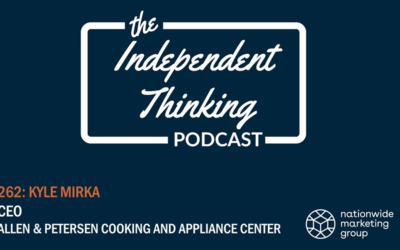The holidays are here, and many independent retailers are still in the throes of the “next normal,” coined by McKinsey & Company as an opportunity to emerge stronger from the Coronavirus pandemic. In its “The recovery will be digital” report, McKinsey stresses the vital role of digital in today’s businesses, focused on how it relates to the evolving shopper journey.
I know ecommerce might be a terrifying concept for you and I am just one shopper among millions. But I can tell you that in the last 21 months I have purchased a laundry pair, a dining room set, a sleeper sofa, 2 side tables, a tv console, and too many home accessories to count online, sight unseen. And whether you are ready for it or not, ecommerce is the way of NOW. Let’s alleviate some of your fears, with my top 10 tips for optimizing your online shopping cart.
It’s True: shopping cart abandonment is real
While we saw a 9.3% increase in abandoned carts during the pandemic, today’s average cart abandonment rate is just under 70%, according to recent data from the Baymard Institute, which calculated data from 41 shopping cart abandonment studies.
With roughly seven out of every 10 shoppers not completing their transactions, cart optimization is essential to ensure your cart is a destination in your shopper’s journey.
Set your cart up for conversion success with these 10 tips:
-
- Safeguard consumer information. This remains priority #1 as your customers trust you with their private information. Be sure your website has you covered automatically taking these critical steps to protect customer data: WebSecure Socket Layer (SSL); Payment Card Industry Data Security Standards (PCI DSS); and credit card information encryption and purging.
- Provide fast, easy and secure transactions. Finance integrations ensure a frictionless checkout experience. Is your web provider offering your shoppers a secure and trusted payment method at checkout?
- Offer instant financing. A powerful payment method in the world of e-commerce: instant financing. Instant Financing can reduce friction at checkout, and often increase consumer buying power.
- Feature delivery options. Offer delivery options to meet your customer’s comfort level, contactless delivery is here to stay. Clearly display all the ways customers can receive products, include a contactless option such as curbside pickup.
- Display inventory status. Display inventory tags to seamlessly communicate the status of the products your shoppers are interested in purchasing. Does your web provider offer an availability feature that allows you to create custom inventory filters, using automated rules, informing consumers of product availability levels? Think “in stock,” “out of stock,” or “special order”!
- Confirm credit card information via Luhn validation. This alleviates consumer frustration by immediately indicating if the card number is invalid (typos happen!) and it eliminates wasted time on orders that don’t include valid payment information.
- Use interactive delivery calculation. Your cart should allow you to create rules that automatically vary delivery fees according to items purchased, delivery location and total order price. Does your cart feature robust and variable distance restrictions? Some software providers only allow online transactions within a specific distance from your brick and mortar. Your cart needs to handle these restrictions and apply them per brand.
- Prompt for add-ons. Asking customers to add related accessories, warranties and/or complementary products to their order saves them aggravation and maximizes ticket sizes. Ensure they can see “add to cart” related items on product pages and can easily add to cart.
- Provide auto-complete forms. Your cart should auto-populate all information consumers have previously entered, even if that information was provided outside of the cart.
- Allow out-of-cart pricing. Make sure your site supports showing different pricing outside vs. inside the cart and adds appropriate verbiage around these prices to make consumers aware of, and comfortable with, this variation.
Don’t assume all website providers are able to provide the secure, seamless ecommerce experience your customers expect. Use this checklist to ensure your cart is optimized for success along the shopper’s journey, no matter the digital path they took to find you. Be brave and bold, 2022 is just around the corner!




